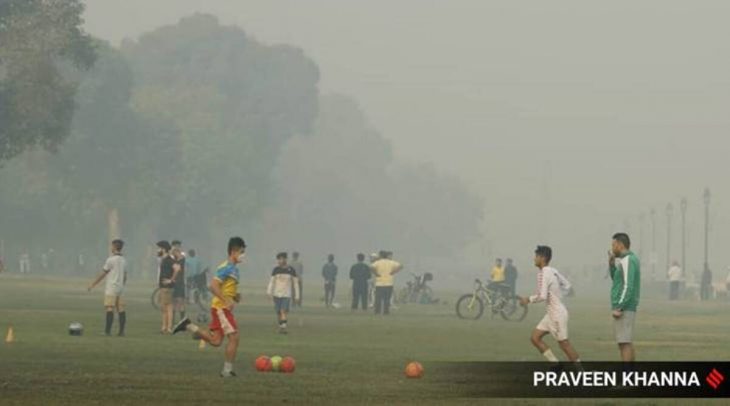The indigenous air quality forecasting framework developed by the System of Air Quality and Weather Forecasting And Research (SAFAR) has received international acceptance. This framework, developed under the National Clean Air Programme (NCAP), is equivalent to the United States Environmental Protection Agency (US-EPA), say experts.
The framework and its findings, done in collaboration with India Meteorological Department and Utkal University, was recently published in the Environment Modelling and Software of the Elsevier Journal.
The accepted framework was designed based on air quality inputs gathered from Delhi, Pune, Mumbai and Ahmedabad. Officials at SAFAR, a programme led by scientists at the Pune-based Indian Institute of Tropical Meteorology (IITM), confirm that this framework can be easily replicated in at least 132 Indian cities that have a population of over 10 lakh.
“The prototype can be scaled up to the remaining 128 cities in India as per the commitment to the NCAP,” said Dr Gufran Beig, SAFAR’s founder project director.
SAFAR’s founder project director Dr Gufran Beig told The Indian Express that the SAFAR framework is a one-stop solution for air quality management leading to mitigation and it also helps formulate micro-specific air action plans based on robust science. “SAFAR’s forecasting model is comparable to the framework by the United States Environmental Protection Agency (US-EPA),” he said.
Air pollutant forecasting is an important part of the air quality early-warning framework reported in this work for Indian megacities of vivid micro-environments. “But the chaotic nature and complexity of air pollution itself make prediction a challenging task, particularly in a city which is highly influenced by meteorology due to its geographical location which is considered in this work,” said Dr Beig.
Now, India will no longer need to depend on any international air quality forecasting frameworks. In addition, urban local bodies can make use of this framework to issue health and other advisories from time to time, thus saving the lives of those with compromised respiratory systems.
India currently has 132 non-attainment/million-plus cities under its NCAP program which seeks to achieve a 20-30 per cent reduction in particulate matter (PM) concentrations by 2024, keeping 2017 as the base year. Non-attainment cities are those that do not meet the prescribed air quality standards set by the Union environment ministry. Air pollution is likely to reduce the life expectancy of about 40 per cent of Indian citizens by more than nine years, a recent report – Air Quality Life Index (AQLI) 2019 – released by the Energy Policy Institute at the University of Chicago (EPIC) said.
Air pollution inventory for four cities
According to experts, the annual Particulate Matter 2.5 (PM 2.5) generated by all sources was the highest in Delhi (77 gigagrams/year) followed by Ahmedabad (57 Gg/year), Mumbai (45 Gg/year) and Pune (30 Gg/year).
Interestingly, despite having the least annual PM 2.5 level concentration, Pune stood second after Delhi concerning the emissions contributed by the transport sector — the main PM 2.5 contributor. This has yet again emphasised the need for robust public transport in Pune and improving the overall transport facilities here. Considering its population — both of people and vehicles, the transport sector of Delhi contributed only 41 per cent towards the national capital’s pollution. 40 per cent of Pune’s pollution came from the transport sector.
Whereas in Mumbai, the uncontrolled combustion within the highly-dense slum population was driving the PM 2.5, SAFAR noted. At 15.5 per cent, the biofuel combustion contribution was the highest in Mumbai and Pune (11.4 per cent), Ahmedabad (10.2 per cent) and Delhi (3 per cent).
Industries contributed the highest towards air pollution in both Mumbai and Pune which stood at 31.1 per cent and 21.6 per cent in comparison to Ahmedabad (18.8 per cent) and Delhi (18.6 per cent).






Leave a Reply